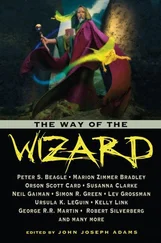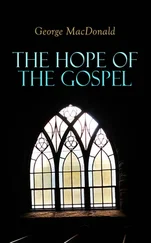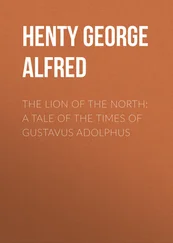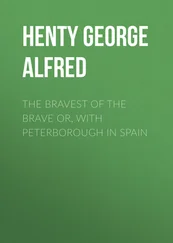George Fitch - The Critic in the Orient
Здесь есть возможность читать онлайн «George Fitch - The Critic in the Orient» — ознакомительный отрывок электронной книги совершенно бесплатно, а после прочтения отрывка купить полную версию. В некоторых случаях можно слушать аудио, скачать через торрент в формате fb2 и присутствует краткое содержание. Жанр: periodic, foreign_antique, foreign_prose, на английском языке. Описание произведения, (предисловие) а так же отзывы посетителей доступны на портале библиотеки ЛибКат.
- Название:The Critic in the Orient
- Автор:
- Жанр:
- Год:неизвестен
- ISBN:нет данных
- Рейтинг книги:5 / 5. Голосов: 1
-
Избранное:Добавить в избранное
- Отзывы:
-
Ваша оценка:
- 100
- 1
- 2
- 3
- 4
- 5
The Critic in the Orient: краткое содержание, описание и аннотация
Предлагаем к чтению аннотацию, описание, краткое содержание или предисловие (зависит от того, что написал сам автор книги «The Critic in the Orient»). Если вы не нашли необходимую информацию о книге — напишите в комментариях, мы постараемся отыскать её.
The Critic in the Orient — читать онлайн ознакомительный отрывок
Ниже представлен текст книги, разбитый по страницам. Система сохранения места последней прочитанной страницы, позволяет с удобством читать онлайн бесплатно книгу «The Critic in the Orient», без необходимости каждый раз заново искать на чём Вы остановились. Поставьте закладку, и сможете в любой момент перейти на страницу, на которой закончили чтение.
Интервал:
Закладка:
The first Buddhist temple at Nikko dates back to the eighth century, but it was not until the seventeenth century that the place was made a national shrine by building here the mausoleum of the first shogun, Ieyasu, and of his grandson, Iemitsu. Hardly less noteworthy than these shrines and temples is the great avenue of giant cryptomeria trees, which stretches across the country for twenty miles, from Nikko to Utsunomiya.
One of the chief objects of interest in Nikko is the Sacred Red Bridge which spans a swift stream about forty feet wide. This is a new bridge, as the old one was carried away by a great flood nine years ago. Originally built in 1638, it served to commemorate the legendary and miraculous bridging of the stream by Shodo Shonin, a saint. He arrived at the river one day while on a pilgrimage and called aloud for aid to cross. On the opposite bank appeared a being of gigantic size, who promised to help him, and at once flung across the stream two green and blue dragons which formed a bridge. When the saint was safely over the bridge, it vanished with the mysterious being. Shodo at once built a hut on the banks of the stream. For fourteen years he dwelt there and gathered many disciples. Then he established a monastery and a shrine at Lake Chuzinji, about nine miles from Nikko. Nine hundred years later the second shogun of the Tokugawa dynasty sent two officials to Nikko to select a site for the mausoleum of his father. They chose a site near Nikko, on a hill called Hotoke-iwa, and in the spring of 1617 the tomb was completed and the coffin was deposited under it with appropriate Buddhist ceremonies.
The road to the mausoleum winds around the river. The first object on the way is a pillar erected in 1643 to ward off evil influences. It is a cylindrical copper column forty-two feet high, supported by short horizontal bars of the same material, resting on four short columns. Small bells hung from lotus-shaped cups crown the summit of the column. Just beyond this column is a massive granite torii, twenty-seven and one-half feet high, the gift of the Daimiyo of Chikuzen. To the left is a five-story pagoda, one hundred and four feet in height, which is especially graceful. Inside a red wooden wall are arranged a series of lacquered storehouses, a holy water cistern cut out of a solid block of granite, a finely decorated building in which rest a collection of Buddhist writings. A second court is reached by a flight of stairs. Here are gifts presented by the kings of Luchu, Holland and Korea, these three countries being regarded as vassal states of Japan. On the left is the Temple of Yahushi, beautifully decorated in red and gold lacquer, and just beyond is a fine gate, called Yomei-mon, decorated with medallions of birds. Passing through this gate, one reaches a court bordered by several small buildings, one of which contains the palanquins that are carried in the annual procession on June 1st, when the deified spirits of the first shogun, Hideyoshi (the great conqueror), and Yoritomo occupy them. Seventy-five men carry each of these palanquins.
The main shrines are reached through the Chinese gate. The three chambers are magnificent specimens of the finest work in lacquer, gold and metal. The tomb of Ieyasu, the first shogun, is reached by ascending two hundred stone steps. The tomb is in the form of a small pagoda of bronze of an unusually light color caused by the mixture of gold. The body of the shogun is buried twenty feet deep in a bed of charcoal. Beyond is the mausoleum of Iemitsu, the third shogun. The oratory and chapel are richly decorated, but they do not compare with those of the first shogun's tomb. Back of these tombs, among the huge cedar trees that clothe the sides of the mountain, is a small red shrine where women offer little pieces of wood that they may pass safely through the dangers of childbirth. Near by is the tomb of Shodo, the saint, and three of his disciples.
These mortuary temples and tombs are genuinely impressive. They bear many signs of age and it is evident that they are held in great veneration by the Japanese, who make pilgrimages at all seasons to offer up prayers at these sacred shrines. More impressive than the tombs themselves are the pilgrims. On the day that I visited this sacred shrine several large bands of pilgrims were entertained. One party was composed of over a hundred boys from one of the big government military schools. These lads were in uniform and each carried an umbrella and a lunch tied up in a handkerchief. The priests paid special attention to these young pilgrims and described for their benefit the marvels of carving and lacquer work. Services were held before the shrines and the glorious conquest of the shoguns and of Hideyoshi (popularly known as the Napoleon of Japan) were described in glowing words. The Russian cannon captured at Port Arthur, which stands near the entrance to the tombs, was not forgotten by these priests, who never fail to do their part in stimulating the patriotism of the young pilgrims.
These boys were followed by an equal number of public school girls, all dressed in dark red merino skirts and kimonos of various colors. Some were without stockings and none wore any head covering, although each girl carried her lunch and the inevitable umbrella.
After these children came several parties of mature pilgrims, some finely dressed and bearing every evidence of wealth and position, while others were clothed in poor garments and showed great deference to the priests and guides. All revealed genuine veneration for the sacred relics and all contributed according to their means to the various shrines. Some idea of the revenue drawn by the priests from tourists and pilgrims may be gained when it is said that admission is seventy sen (or thirty-five cents in American money) for each person, with half-rates to priests, teachers and school children, and to members of parties numbering one hundred.
The shops at Nikko will be found well worth a visit, as this city is the market for many kinds of furs that are scarce in America. Many fine specimens of wood carving may also be seen in the shops. The main street of the town runs from the Kanaya Hotel to the railroad depot, a distance of a mile and one-half, and it is lined for nearly the whole distance with small shops.
On his return to the railroad the tourist would do well to take a jinrikisha ride of five miles down through the great avenue of old cryptomeria trees to the little station of Imaichi. This is one of the most beautiful rides in the world. The road is bordered on each side by huge cedar trees which are from one hundred and fifty to two hundred feet in height. In many cases the roots of these old trees have formed a natural embankment and the road is thus forced below the level of the surrounding rice fields. These trees were planted nearly three hundred years ago and they are certainly in a remarkable state of preservation. A few gaps there are, due to the vandalism of the country people, but mile after mile is passed with only an occasional break in these stately columns, crowned by the deep green masses of foliage. Another cryptomeria avenue intersects this and runs for twenty-five miles across the country. The two avenues were planted in order that they might be used by the shogun's messengers when they bore important letters to him during his summer residence in Nara.
In Kyoto, The Ancient Capital of Japan
Next to Nikko, one of the most interesting cities in Japan is Kyoto, the old capital under the shoguns, the seat of several fine palaces and many beautiful temples, and the center of large manufacturing works of satsuma and cloissone ware, damascene work and art work on silk and velvet. Kyoto may be reached by a short ride from Kobe, but from Tokio it is an all-day trip of twelve hours by express train. This ride, which would be comfortable in well appointed cars, is made tedious by the Japanese preference for cars with seats arranged along the side, like the new American pay-as-you-enter street cars. For a short ride the side seat may be endured, but for hours of travel (especially when one is a tourist and wishes to see the scenery on both sides of the road) the cars are extremely tiresome.
Читать дальшеИнтервал:
Закладка:
Похожие книги на «The Critic in the Orient»
Представляем Вашему вниманию похожие книги на «The Critic in the Orient» списком для выбора. Мы отобрали схожую по названию и смыслу литературу в надежде предоставить читателям больше вариантов отыскать новые, интересные, ещё непрочитанные произведения.
Обсуждение, отзывы о книге «The Critic in the Orient» и просто собственные мнения читателей. Оставьте ваши комментарии, напишите, что Вы думаете о произведении, его смысле или главных героях. Укажите что конкретно понравилось, а что нет, и почему Вы так считаете.












